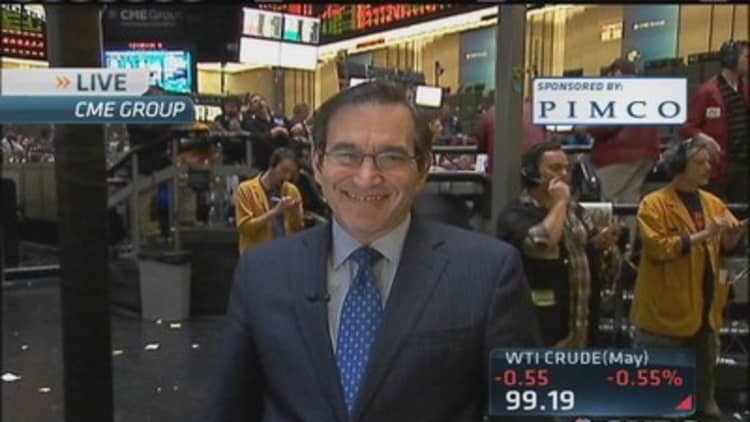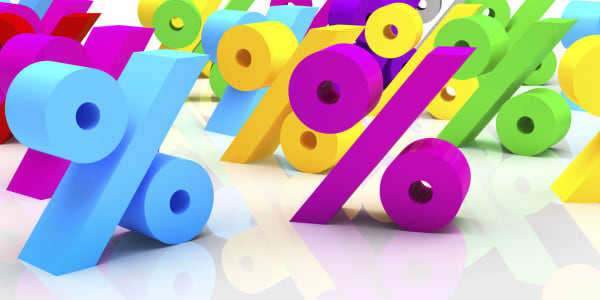While I have introduced many of my clients to the idea of investing in bonds over the years, I've come to realize that not everyone understands what bonds are and how they work. My hope is that this quick primer offers some insight as to how this asset class fits into portfolios.
First off, there's a vast difference between owning stocks and owning bonds.
A stockholder buys a portion of a company with the expectation that the company will grow in value over time as well as pay out dividends, or cash, from earnings.
But a bondholder is a lender to an institution. When someone invests in a bond, he or she knows up front the terms of the loan, as well as its repayment schedule. Put another way, you know when the institution is going to pay you back — with interest — which is called a yield.
Read MoreInvestors yield to bonds' charms
Investors can use bonds to lend to almost any type of entity: companies, municipalities and even governments, such as our own. These institutions use bonds as a way to raise capital to grow — as in the case of, say, Starbucks — or to sustain cash flow, which is why the U.S. government issues bonds. The interest rate agreed to on a bond could either be a fixed rate (e.g., 3 percent) or what's known as a floating rate, which varies over time.
When you think about them this way, bonds are fairly straightforward. So why, then, do they still create so much confusion and fear? Because changes in interest rates cause havoc in the bond markets.
Put simply, the prices of bonds move in the opposite direction that interest rates do; i.e., when interest rates go up, bond prices go down. Why? Because as interest rates go higher, new bonds will pay more than those that were offered earlier at a lower interest rate.
For example, a 10-year Treasury bond issued at the beginning of the year with a 3 percent yield would pay the bond owner $300 per year on the $10,000 principal value of the bond. But if interest rates rise to 4 percent, a newly issued identical bond would now pay $400 per year. Because the original bond now yields less the newer one, it's worth less than the newer bond and its price falls.
Read MoreHow to deal with rising rates
While the financial news media may be obsessed these days with what might happen if interest rates do rise in the near future, the impact will depend largely on how quickly and by how much they rise— which is what makes investing in bonds confusing for so many people.
The big question then becomes: If interest rates do change, where should I invest? It all depends on what you believe will happen.

Types of bonds
Investment research firm Morningstar has multiple categories for defining bond funds. The most popular and prominent ones today include:
Municipal bonds. These are bonds issued by state and local municipalities for general obligations or specific projects, such as toll roads, airports or schools. Most of these bonds are exempt from federal and many state and local taxes.
Corporate bonds. These are bonds issued by companies, both domestic and foreign. They are issued in many structures, ranging from fixed-term bonds, floating-rate bonds and convertible bonds.
Treasury bonds. Treasury bonds are debt obligations issued by the U.S. government. These securities range from Treasury bills that mature in less than one year to longer-term five-year, 10-year and even 30-year issues.
Foreign bonds. These bonds are issued by non-U.S. governments. They are issued in the local currency (euros, yen, pesos, etc.) or in U.S. dollars. Bonds issued in a foreign currency are more volatile, since changes to this currency will affect the price for U.S.-based investors.
Read MoreWorld's all-time sky-high rates
High-yield bonds. These are corporate bonds that are no longer rated investment-grade by the primary rating agencies. Because these bonds are deemed riskier than those issued by investment-grade companies, the yield required by investors to compensate for this risk is generally much higher. (Editor's note: High-yield bonds were once commonly referred to as junk bonds.)
Inflation-protected bonds. Treasury Inflation-Protected Securities are issued by the U.S. government and are meant to provide protection against inflation. The yield of a TIPS bond increases with inflation and decreases with deflation, as measured by the Consumer Price Index. Also, when a TIPS bond matures, the holder is paid the adjusted principal or original principal, whichever is greater.
Unconstrained bonds. This is not a specific type of bond invested but rather a category given to bond managers who take a more dynamic — perhaps tactical and opportunistic — approach to investing in a broader spectrum of bond opportunities.
Good bond bets
As far as interest-rate specific strategies go, if interest rates go down, high-quality Treasury and municipal bonds remain good bets because these bonds typically have lower yields and greater interest-rate sensitivity. Examples include:
—Fidelity Government Bond
—Vanguard Intermediate-Term Tax-Exempt
Read MoreAre bonds still safe? It depends
If you believe that interest rates are going up, then you might look to invest in floating-rate bonds or short-term bonds, such as:
—Eaton Vance Floating-Rate Bond
—Vanguard Short-term Investment Grade
If you are generally optimistic about a global recovery and higher interest rates, investing in high-yield bonds or an unconstrained bond fund could be a wise strategy.
If you see a global economic recovery on the way, you could look closely at investing in emerging market or global bonds, such as:
—Templeton Global Bond
—Loomis Sayles Global Bond
Read MoreETFs: The Amazon.com of funds
And finally, if you are generally optimistic about a global recovery and higher interest rates, investing in high-yield bonds or an unconstrained bond fund could be a wise strategy. Sample bonds and funds include:
—Fidelity High Income
—Driehaus Active Income
Rising rates are not the end of the world. In fact, if rates rise, this will increase the future income for savers and those with capital to reinvest at higher rates. That's why knowing what you own — and why you own it — will be critical to your bond-investing success now and into the future.
Barry Glassman is a certified financial planner and founder and president of Glassman Wealth Services.




